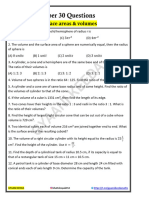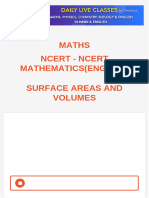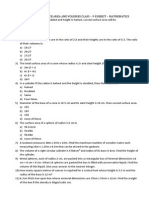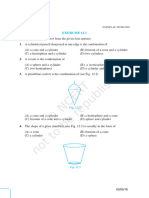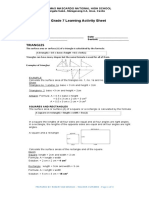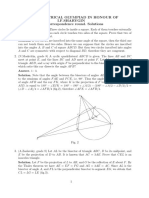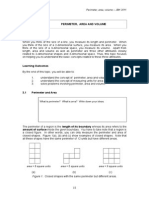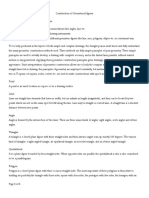0% found this document useful (0 votes)
20 views96 pagesSelfstudys Com File
The document contains a series of exercises related to the surface area and volume of cylinders, cones, and spheres. Each exercise presents various problems requiring calculations of volume, surface area, and other geometric properties. The problems range from basic calculations to more complex scenarios involving multiple shapes and conversions.
Uploaded by
sudiptadas2016catCopyright
© © All Rights Reserved
We take content rights seriously. If you suspect this is your content, claim it here.
Available Formats
Download as PDF, TXT or read online on Scribd
0% found this document useful (0 votes)
20 views96 pagesSelfstudys Com File
The document contains a series of exercises related to the surface area and volume of cylinders, cones, and spheres. Each exercise presents various problems requiring calculations of volume, surface area, and other geometric properties. The problems range from basic calculations to more complex scenarios involving multiple shapes and conversions.
Uploaded by
sudiptadas2016catCopyright
© © All Rights Reserved
We take content rights seriously. If you suspect this is your content, claim it here.
Available Formats
Download as PDF, TXT or read online on Scribd
/ 96




